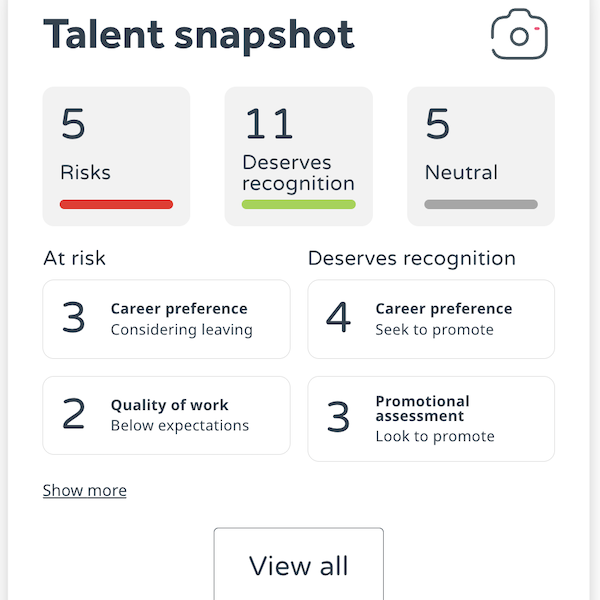 As seen in HR Magazine
As seen in HR Magazine
Andrew Heath, CEO, WeThrive, explains what employers are missing and what they should focus on when it comes to an effective employee engagement strategy.
We think we’re getting better at employee engagement, but we’re not really. Perhaps your organisation has closely watched the trends over the years and you’ve ditched your annual survey for regular pulse questionnaires or you’ve invested in a shiny new dashboard that flashes red the minute the benchmark falls beneath some magic number. But have things really changed much?
Interestingly, figures from Gallup show that in the two decades between 2000 and 2020 – and despite the widely held belief that employers have become far more employee-focused and a booming engagement/wellbeing/experience industry – actual engagement levels in the US have increased by just 10% to 36%. You might be seeing slight improvements on overall scores, but this doesn’t tell you whether managers are supporting their teams to be happier or more productive or if certain individuals feel so unrecognised they’re about to leave.
For organisations used to traditional engagement measurement methods, the pandemic has left them at a loss. Asking employees more regularly whether they feel stressed or about their levels of wellbeing only tells you just that – and fears around job security or that they’ll be identified could mean they’re just telling you what they want you to hear.
According to the Office for National Statistics, the UK’s GDP fell 9.7% last summer, so businesses are not only facing dilemmas about reframing where and how we work in a post-COVID world, but also how to plug that productivity gap. Knowing that employees feel stressed and unmotivated is one thing but finding out why and what to do about it is another.
In the remote-working world, even experienced managers struggle to know the questions to ask that dig into what will really motivate someone or what has thrown them off course. I believe that change starts on an individual level. By working with individuals’ specific needs, you can build change incrementally and the uplift in engagement scores will follow. Starting with top-level questions such as ‘How much of the time does your work tie into the company vision or benefit customers?’, we can then drill down into any low-scoring areas to find out what would help that person be better at their job. This then produces a series of actions for the manager, including pointers to specific e-learning or TED talks to build their confidence in that area. This creates an ‘upstream’ effect of knowing the problem, suggesting actions to address it and employee improvement. This can be a lifeline for managers who struggle to engage with employees who they are not physically interacting with every day.
The next level of driving change is empowering individual employees themselves to discover where their barriers to progress are. Using a proven psychological model, we create bubbles that put employees in control of their own workplace experience, shifting the balance from having to complete a survey for head office to wanting to complete one to better understand themselves and access the targeted self-help resources. The questions may uncover that they’re feeling insecure about their job, detect the root causes for this (such as ‘I think extra skills would be useful’ and ‘I’d like help with handling certain situations’’), and suggest learning points directly associated with those challenges. Perhaps the issue is that their manager does not check in with them enough, so the action points and learning suggestions filter upwards.
The solutions may be around wellbeing: if the questions uncover that the employee is suffering from acute levels of stress, there may be pointers to specific advice on managing time, a link to a mental health first aider or the employee assistance programme. We recently helped a client to discover that one in ten staff were suffering high levels of anxiety and the organisation has since introduced one-to-one counselling on a weekly basis for each of those employees.
Perhaps you offer all of these resources already? Perhaps you have a rich employee experience platform where people can access all manner of learning tools, links to mindfulness videos and even online yoga. The problem is when we’re all stressed, it’s not enough to tell someone to go on a course or to access an employee assistance programme.
We get ‘Netflix syndrome’ and can’t decide which one would be best so spend time looking for something to help, settling on something that isn’t quite right and wasting that time. Asking the right questions at an individual level, rather than applying generic all-employee feedback mechanisms or simply offering a smorgasbord of content that might help, does not get to the root of the problem. Targeted solutions for individuals don’t have to be expensive or time-consuming, but can make those small incremental changes that build up to more lasting culture change, higher productivity and better engagement overall.
Snazzy features such as kudos charts and traffic light systems look great, but don’t really do much other than drive up the cost of what is essentially the same engagement platform as companies were using in the 1990s. Being able to see trends in new and exciting ways does not drive change. Instead, organisations must enable managers to give direct and timely feedback and offer targeted advice that will influence performance. Couple that with empowered individuals who can see where their strengths and weaknesses lie and act upon it and you start to see real results.

